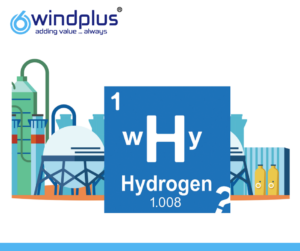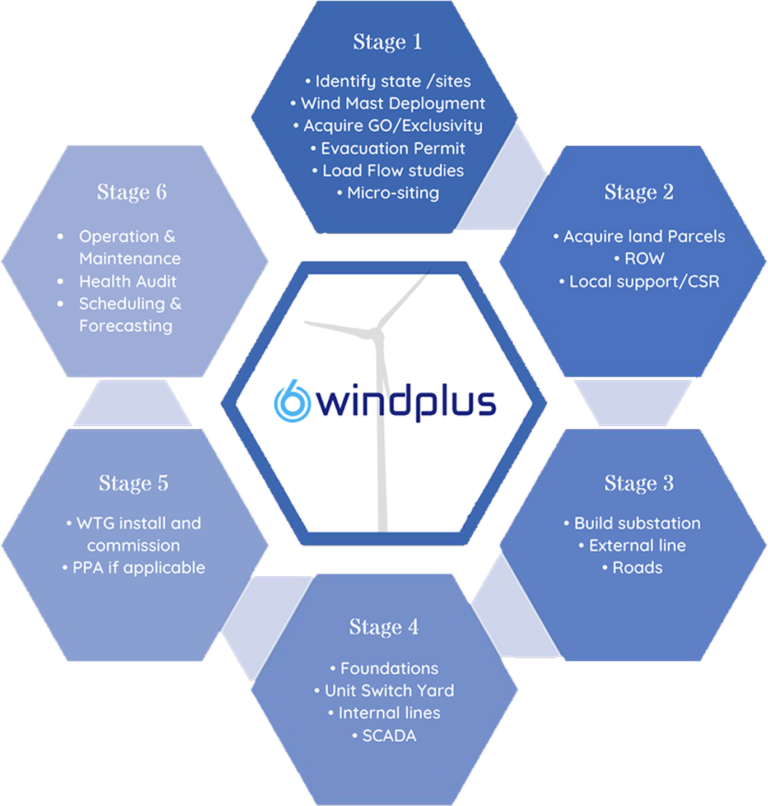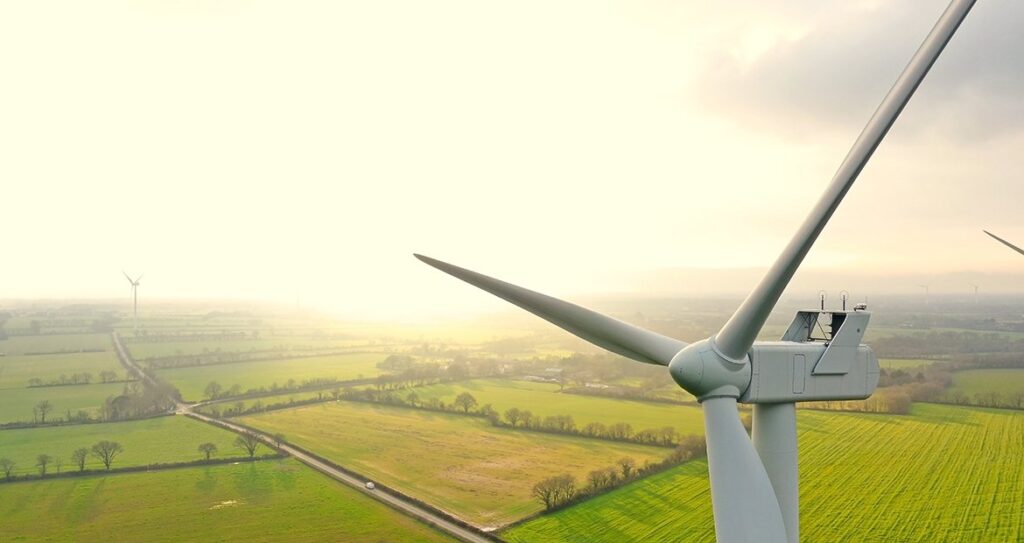
India is the home of 1.36 billon people i.e. 17.5% of the total world population, which makes it second most populous country in the world. India has the second fastest growing economy of the world. India’s substantial and sustained economic growth over the years is placing enormous demand on its energy resources.
Wind energy can be harnessed almost anywhere in the world, to varying levels of success, but the issue is whether or not it is financially feasible. Wind turbines, on a very basic level, work the opposite of a fan. Instead of using electricity to make wind, like a fan, wind turbines use wind to make electricity. The wind turns the blades, which spin a shaft, which connects to a generator and makes electricity
Perhaps the greatest benefit of wind turbines are their extremely low operating costs. Once they are built and established, so they do not possess the same sort of maintenance costs of a nuclear reactor or coal plant. It is also a completely renewable resource, the world is never (until the sun burns out) going to “run out” of wind. They are also quite space efficient, ` Energy Informative points out.
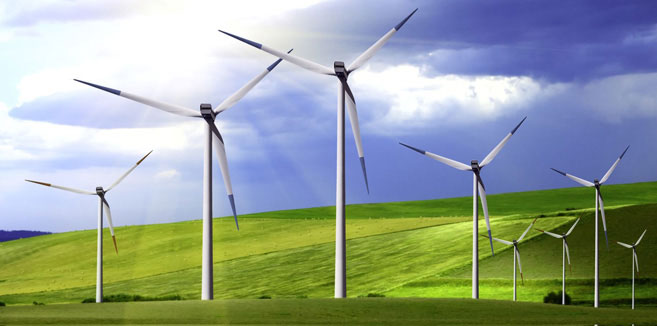
“The largest wind turbines are capable of generating enough electricity to meet the energy demand of 600 average Indian homes. The wind turbines can`t be placed too close to other, but the land in-between can be used for other things. This is why many farms would benefit more from installing wind turbines as opposed to solar panels.”
India’s wind energy sector is led by indigenous wind power industry and has shown consistent progress. The expansion of the wind industry has resulted in a strong ecosystem, project operation capabilities and manufacturing base of about 10,000 MW per annum. The country currently has the fourth highest wind installed capacity in the world with total installed capacity of 39.25 GW (as on 31st March 2021) and has generated around 60.149 Billion Units during 2020-21 (MNRE).
Potential of Wind Energy in India
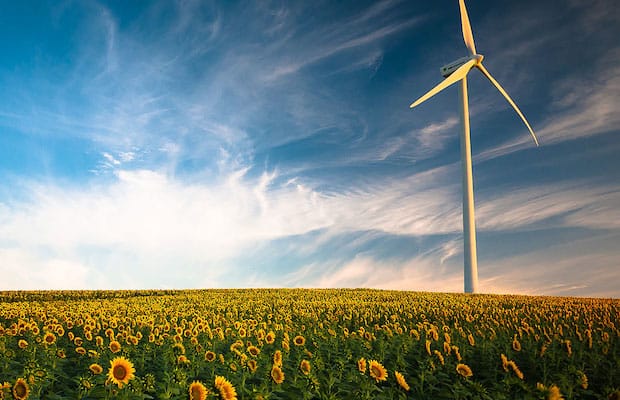
Wind is an intermittent and site-specific resource of energy and therefore, an extensive Wind Resource Assessment is essential for the selection of potential sites. The Government, through National Institute of Wind Energy (NIWE), has installed over 800 wind-monitoring stations all over country and issued wind potential maps at 50m, 80m, 100m and 120m above ground level. The recent assessment indicates a gross wind power potential of 302 GW in the country at 100 meter and 695.50 GW at 120 meter above ground level. Most of this potential exists in seven windy States as given below
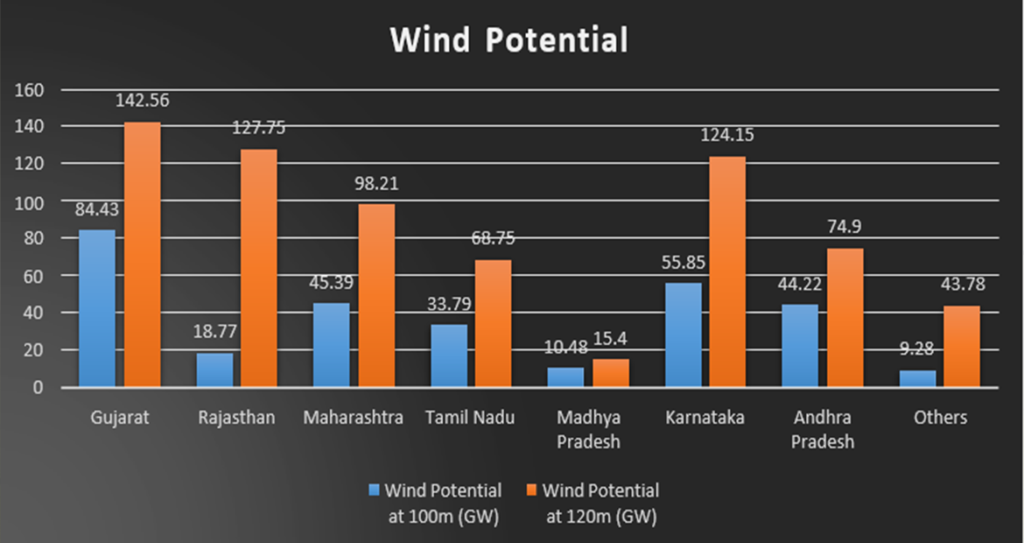
Off-Shore Wind Energy
India is blessed with a coastline of about 7600 km surrounded by water on three sides and has good prospects of harnessing offshore wind energy. Ministry set a target of 5.0 GW of offshore wind installations by 2022 and 30 GW by 2030 which has been issued to give confidence to the project developers in India market.Offshore wind turbines are much larger in size (in range of 5 to 10 MW per turbine) as against 2-3 MW of an onshore wind turbine.
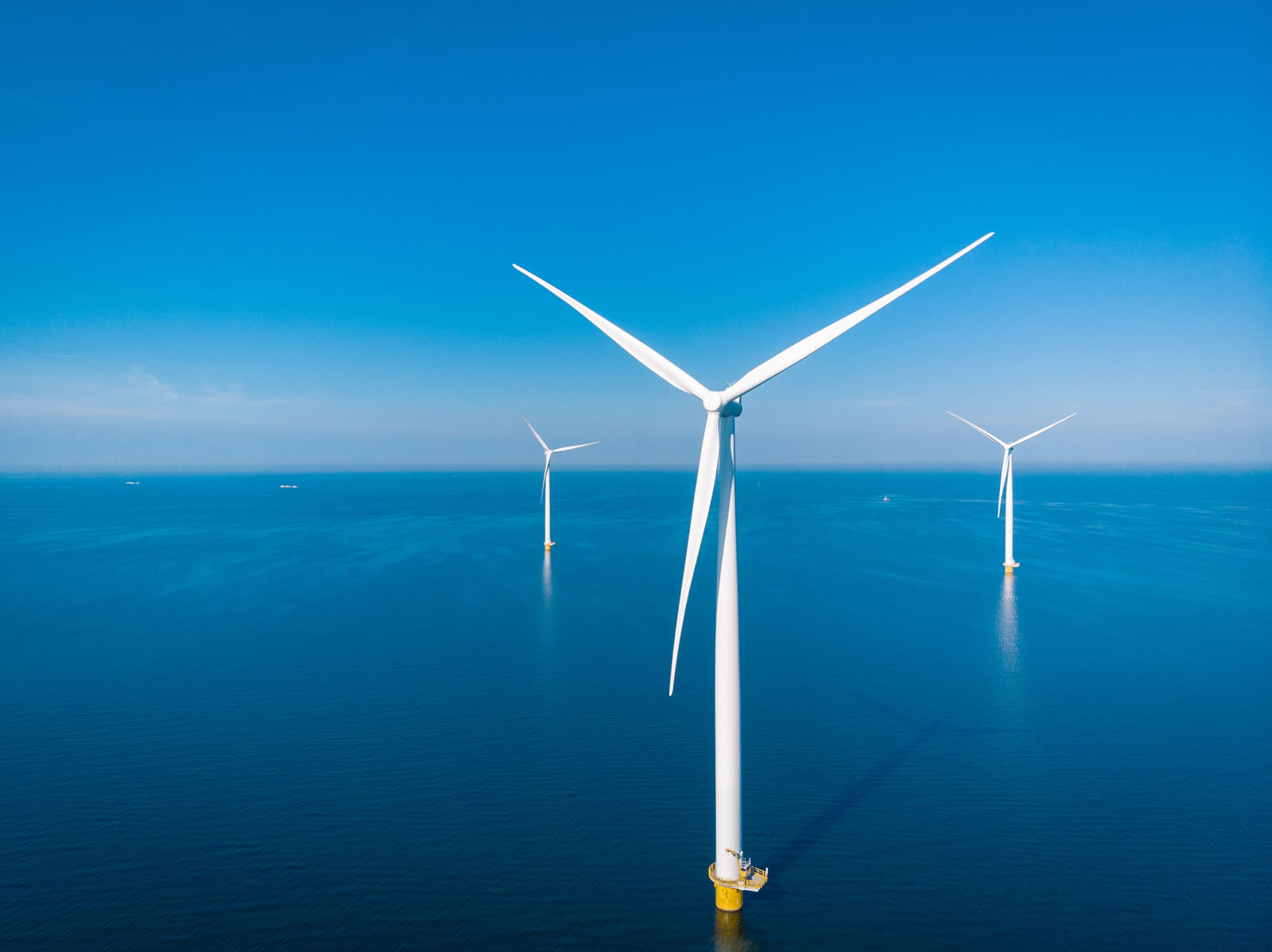
While, the cost per MW for offshore turbines are higher because of stronger structures and foundations needed in marine environment, the desirable tariffs can be achieved on account of higher efficiencies of these turbines after development of the eco system
Global Scenario
Globally offshore wind is about two decades old history with the first offshore wind turbine in Denmark in 1991 which has been decommissioned in 2017. As of now the total installation is about 35.3 GW in 18 different countries of which important ones are- UK (10428 MW), China (9996 MW), Germany (7689 MW), Denmark (1701 MW), The Netherlands (2611 MW), Belgium (2261 MW), Sweden (192 MW). Capacity additions in last four years stands at 57% of the total capacity out of which 6358 MW commissioned in 2020, 4679 MW in 2019, 4792 MW in 2018 and 4495 MW in 2017.
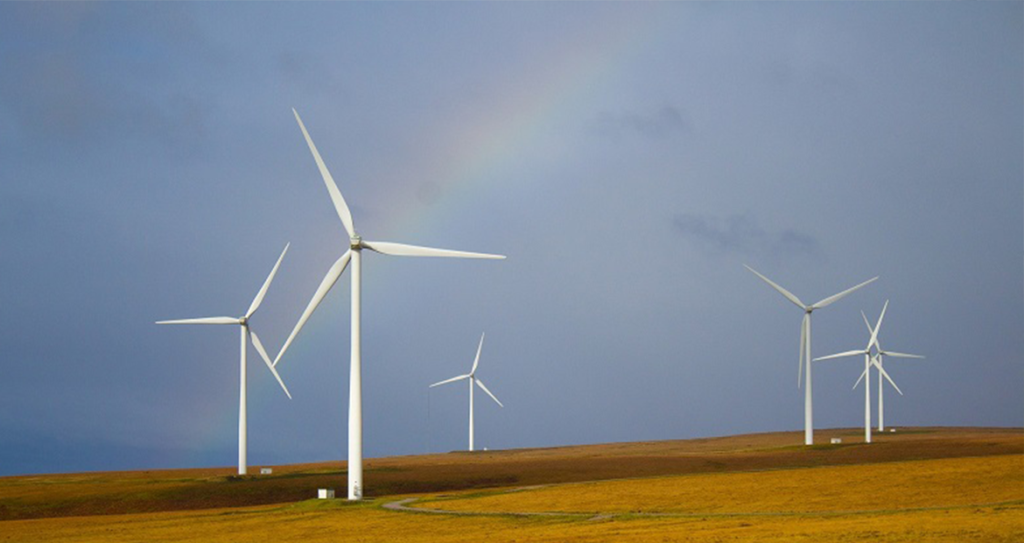
The first 1.0 GW offshore Wind Energy Project
The first offshore wind energy project of 1.0 GW capacity was planned in the identified zone- B off the coast of Gujarat in order to bring the economy of scale and localization of necessary ecosystem for offshore wind energy sector. In principle (stage-I) clearance as per the National offshore wind energy policy from relevant Ministries/Departments for a 1.0 GW offshore wind energy project in Zone –B off Gujarat coast has already been obtained. Expression of Interest (EoI) for the first offshore wind project of 1.0 GW capacity off Gujarat coast has been floated on 10.04.18 by NIWE.
The bottom line is the wind energy is a very developed field already, relative to the many other forms of alternative energy. It provides clean, sustainable energy to many people across the world, and it will definitely be interesting to see if the industry can meet current projections and expectations for the future. So this is why Wind energy is a great source to fulfil India’s energy needs as well as develop its economy.
“Take care of our earth and she will take care of you.”



